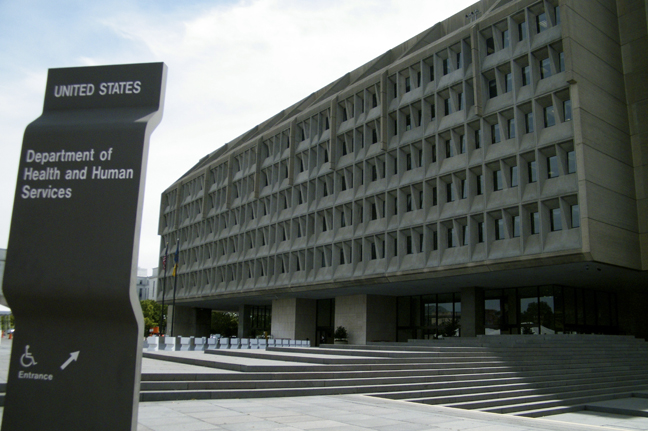Food Safety & Gov't Regulations
Food & Drug Admin. puts the squeeze on maple registration
Midsized companies must comply by fall, with smaller operations by November 2018
By PAUL POST | NOV. 10, 2017
The clock is ticking for maple producers throughout the U.S. who must comply with new Food Safety Modernization Act regulations.
The section of the 2011 bill that affects maple producers, called the Preventive Controls Rule, took effect in November 2015. The largest operations had to comply by last November, while mid- and small-sized businesses have until this fall or November 2018, respectively.
The most critical question producers must ask is: Are more than half my sales direct-to-consumer? This can be through a variety of means such as a CSA, roadside stand, farmer’s market or online sales.
If the answer is yes, the business is considered a retail food establishment, which includes grocery stores and restaurants, and the law does not apply to them so no action is necessary.
However, firms with lower consumer sales volumes must register with the U.S. Food and Drug Administration as a food processing facility and follow good manufacturing processes, subject to periodic inspections.
Registration may be done online at: https://www.fda.gov/food/guidanceregulation/foodfacilityregistration/ucm2006831.htm
Record keeping
Employee education and training, with accurate record keeping of such work is required, too.
Records must (a): be kept as original records, true copies (such as photocopies, pictures, scanned copies, microfilm, microfiche or other accurate copies of original records) or electronic records; (b) be accurate, indelible and legible; ( c) be created concurrently with performance of the activity documented; and (d) be as detailed as necessary to provide history of the work performed.
“I work with a lot of producers and processors,” said Diane Hirsch, senior extension educator/food safety, University of Connecticut, New Haven County Extension Center. “The FSMA rule is scary, especially when your business has not been regulated in this way before, or if you are a really small business with few resources to spend on upgrades or the extra time that may be needed to perform certain tasks related to regulation.”
But most producers that do have to register make low-risk maple products such as syrup and candy, so compliance shouldn’t be difficult. Hirsch tries to allay people’s fears because, she said, “there are very few food safety risk associated with maple syrup.”
Places that make higher-risk products such as maple butter must also write and file a food safety plan with the FDA, after taking a 2-½-day Preventive Controls course that teaches them how to properly develop and implement such plans.
Numerous courses are offered throughout the country. For a listing see: https://fspca.force.com/FSPCA/s/course_registration/Course_Registration__c/00B36000007edjpEAA?language=en_US
“There are more compliance issues if you aren’t a retail food establishment,” said Heather Bryant, University of New Hampshire Extension field specialist. “I think most maple operations are going to find that creating a safe product is fairly easy.”
“People need to figure out where they fall in the rule,” she said. “For some farms it’s going to be really easy.”
Deadline to comply
Small businesses, those with fewer than 500 full-time equivalent employees, have until this September to comply with the new law.
Very small businesses, those averaging less than $1 million per year -- adjusted for inflation -- in both annual sales of human food plus the market value of human food manufactured, processed, packed or held without sale, have until September 2018 to comply.
Most maple producers fall into one of these two categories. All others had to comply by last September.
Farms that only sell direct to consumers don’t need a license. Farms that sell to grocery stores, other farms or restaurants do need one. Inspections will be done prior to licensing.
If the farm is on well water, a test must be done indicating that water is potable.
Hirsch said producers must 1) know the regulations -- ignorance of the law is no excuse; 2) obtain required licenses; 3) learn and implement Good Management Practices and sanitation programs; 4) get water tested and maintain such records; 5) train employees on the basics safe food handling practices; 6) keep training records.
Safety practices
In addition, producers should also develop written standard operating procedures related to Good Management Practices and sanitation; and continually assess operations for possible risks, she said.
“Good Management Practices and sanitation are the foundation of a good food safety program,” she said. “Support a clean food processing environment, designed and managed for safe food production. They help to prevent contamination of food, food contact surfaces and food packaging materials from many sources.”
Food should never be processed at the farm business if employees are ill or exhibit symptoms of vomiting, diarrhea or sore throat with a fever; or if they have open boils, wounds or sores.
“Regardless of the type or food processing or food handling operation, it is essential that all personnel involved in the process-operation follow good personal hygiene practices,” Hirsch said.
This includes wearing clean clothing to protect against contamination, using gloves and hair restraints, and regular hand washing; removing jewelry that might fall into food; and removing or covering (gloves) jewelry that might come into contact with food during handling.
Also, workers should not eat, chew gum or smoke tobacco while processing food, although drinking water from an enclosed container is permissible.
Although maple syrup is a low-risk product, quality and safety will both benefit from using best practices, Hirsch said.
Maple production is subject to some biological and chemical hazards. For example, yeasts and molds can form if syrup is finished or packaged correctly. Likewise, contamination may occur from excessive use of cleaning or de-foaming agents, or from improperly manufactured tubing.
Hazards can be avoided with the proper purchase and storage of ingredients, equipment and supplies, and using production methods that minimize the introduction of hazards throughout the process. For example, storage tanks should always be cleaned with hot water between runs. If chlorine bleach is used, triple rinse to remove any possible residue.































